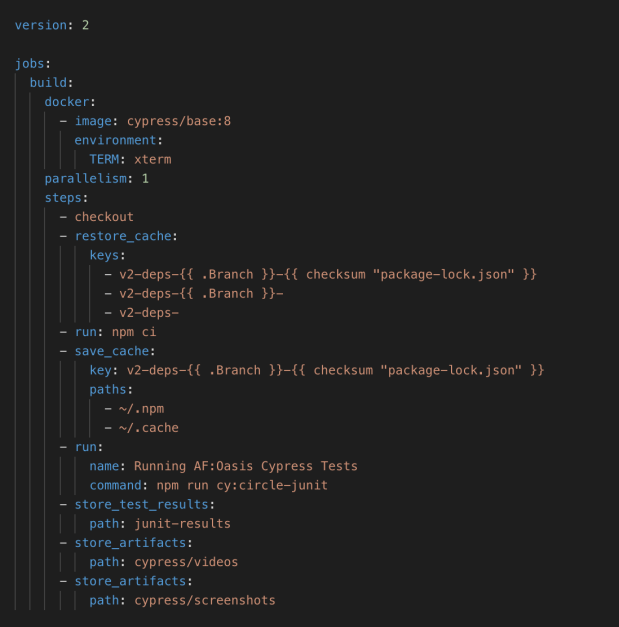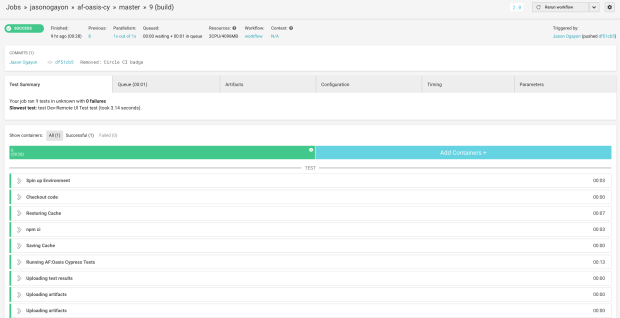Circle CI has been around a while but I’ve never tried their service before. There hasn’t been much of a reason to do so; at work I mostly stuck with a local Jenkins instance because it got the job done. But I recently had the urge to try it out for a private project that I have. I wanted to see if it plays well with Cypress, a test tool I’ve been using for some time.
A search tells me that there’s already a Cypress-Docker-CircleCI example on Github, from Cypress themselves. Cool, I just need to copy their settings to my own project and make changes accordingly.
Here’s how the package.json file looks like:
You’ll see a cy:circle-junit command in there, which does the same thing as cy:run (which runs tests on a terminal) but also builds a JUnit report.
To run our tests on Circle CI, we’re going to need a circle.yml file inside our project, which contains the following:
From this file Circle CI is supposed to checkout the test code, run the cy:circle-junit command, which installs Cypress and other dependencies inside a Docker image, saves that image in a cache (and restores that cache for every succeeding test runs as long as the dependencies remain the same), runs our tests inside a container, creates a simple report, and stores test artifacts afterwards. Looks straightforward. 🙂
Now let’s see if things work!
Connecting my Cypress project on Circle CI and pushing code changes on the remote repository automatically creates test runs that shows up on a neat dashboard like so:
And we can zoom in on the details of every test run, which looks like this:
Awesome! Looks like I’ll continue using their service for this project, and maybe on other projects as well. I’m off to adding proper tests to the suite!












